The Map of the Differently-abled
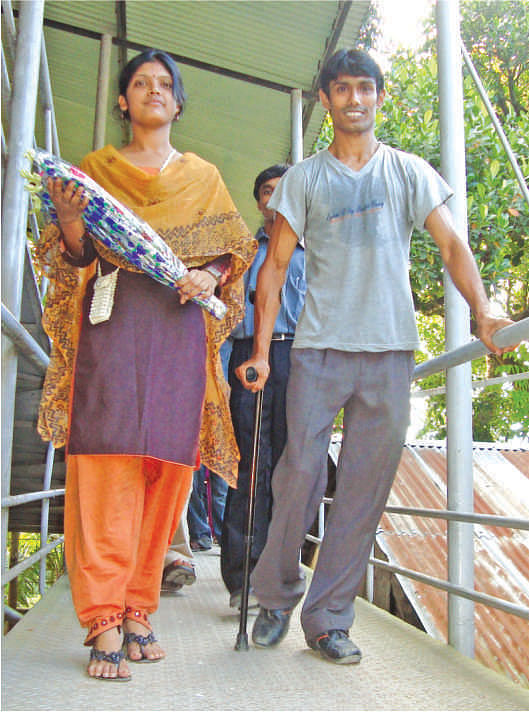
The principle of equally treating every citizen is enshrined in our constitution. While considerable progress has been made in this regard, it is yet to translate into reality for the country's disabled population. Despite the 2001 Disability Welfare Act and the ratification of the UN Conventions-CRDP in 2007, the 15 percent of Bangladeshis who suffer from disability are yet to see their lives significantly change.
Since its inception in 2008, Physically Challenged Development Foundation (PDF) is working for an inclusive society through disability awareness campaign and advocacy. A survey of public universities across the country has recently been conducted by the PDF. The survey, done at seven public universities, has yielded some surprising results: we have covered 160 disabled students of whom only 29 are females. There are nine students who use wheelchairs even though there's no ramp at our public universities. There is a deaf student at
Jahangirnagar University, who is finding it hard to continue his studies due to a lack of infrastructural facilities.
While the country can now boast to have minimised student dropout rates to an all-time low, we have found that in the case of disable students it has remained a mammoth 94.5 percent.
The number of male students with disability is much higher, but it is not because men suffer from disability more than women--it is the society that does not allow female students with disability to reach the tertiary level. We have found that most of the students with disability (SWD) are from arts (53 percent), 21.8 percent are from social science, and only 12 percent are from science.
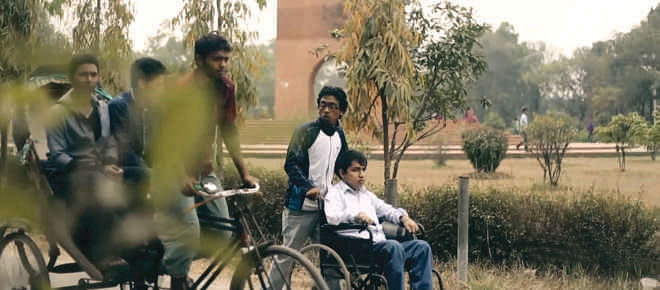
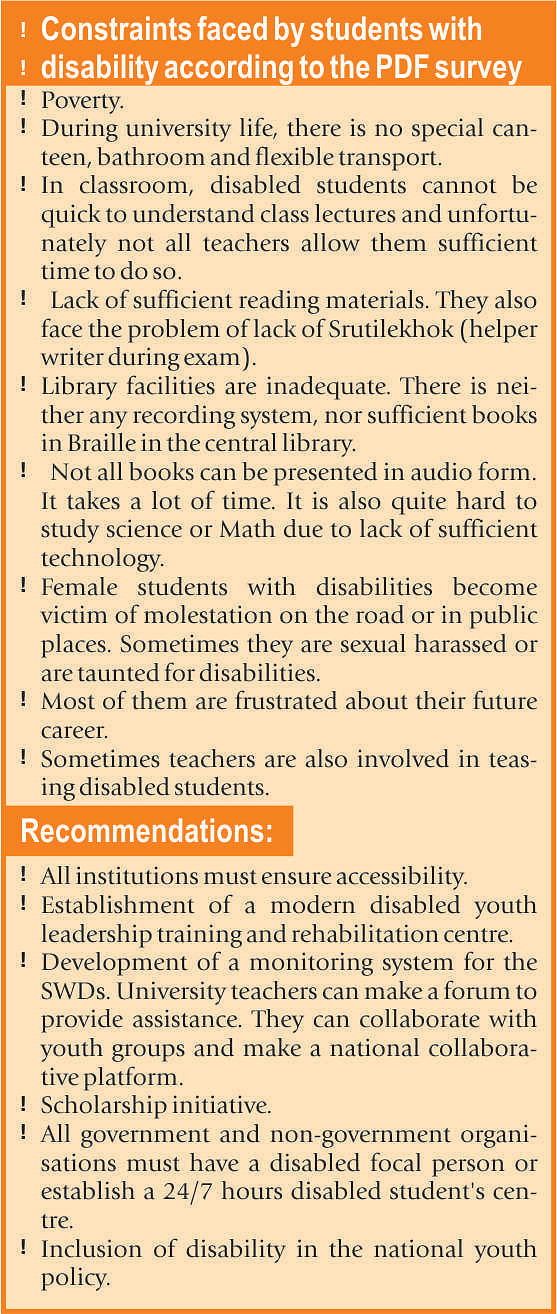
The dominance of Arts is not surprising as there is a quota system for SWD at some universities. The SWDs of Science group have to sit for the University entrance exam with other students, and the 12 percent science SWDs that we see today have beaten their non-disabled counterparts in the competitive exam to get a chance to study at these universities.
When we have talked to these SWDs and asked them the reason behind their success, they simply answered, "It was the positive attitude of the persons who care and believe in our inner power." In most of the cases, the SWDs who make it to the university have their mothers, close friends or teachers as the source of inspiration.
Though they reach the apex educational institutions with a lot of struggle, they are often refused when they apply for jobs. Mobility is one of their major limitations. There is also no quota provision for them in the civil service exam. It was not long ago that they were not even allowed to appear for the BCS exam. Recently these students are getting an opportunity to do low paying jobs such as telephone operators.
Advocate Shapan Chowkider, the then president of Dhaka University unit of the PDF, issued a writ against the Public Service Commission to let disabled students take the BCS exam. Barrister Kamal Hossain ran the writ for him. The PDF, ADD, and BLAST assisted the cause by organising a human chain and a roundtable discussion.
Finally, last year the High Court has decreed that from the 33rd BCS exam, there will be a 1 percent quota for disabled students.
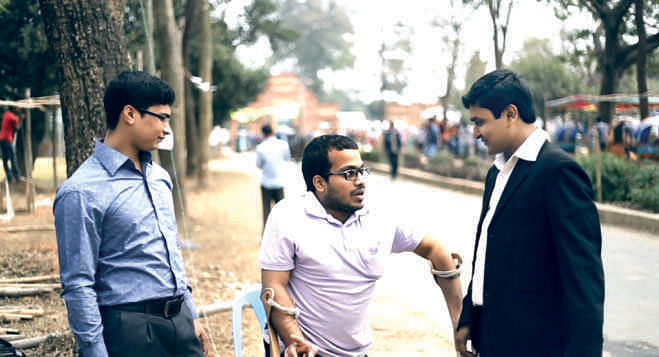
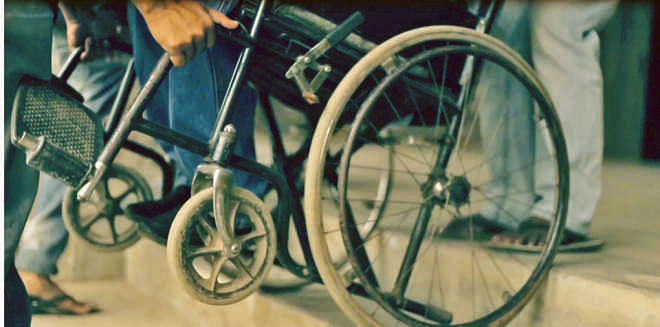
But the struggle for students with disability is far from over. Disability is a part of the human condition. Almost everyone will be temporarily or permanently impaired at some point in life. It is a fact of life. Difference is normal. Some people are excluded from society because of differences. Difference can be due to a number of factors, some universal, some cultural and some context specific. Inclusion is about society changing to accommodate the difference and to combat the discrimination. Till that happens, our society and state will not be able to treat all its citizens as equally as it says it will.
The writer is president of Physically Challenged Development Foundation.

 For all latest news, follow The Daily Star's Google News channel.
For all latest news, follow The Daily Star's Google News channel. 


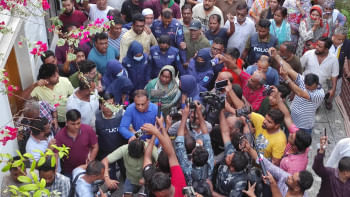
Comments